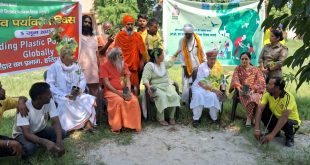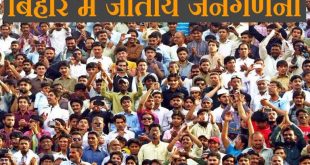Noida. The latest figures from the National Family Health Survey have come. In the latest report of NFHS, many positive facts have also come out about Uttar Pradesh. UP’s literacy, sex ratio, data related to children going to school or health facts are going to show the progress of the state. At the same time, the figures of measures to be taken regarding population control have also increased, but the data of male sterilization is still weak. If you look at the survey data, the men of UP are still hesitant to get vasectomy done. This thought of saving the ‘manhood’ of men troubles women. Although the overall figure for sterilization for family planning has decreased, the trend towards it has increased in the villages.
According to the report of NFHS, awareness among people about family planning has increased in UP as compared to 2015-16. In the survey 5 years ago, where the number of people using any method of family planning in Uttar Pradesh was 45.5%, in 2020-12 it has increased to 62.4%. The number of people using modern methods of planning has also increased. This time the survey has found that 44.5 percent people are adopting modern methods of family planning as compared to 31.7 percent 5 years ago. If we look at the statistics of sterilization for family planning, even today men are far behind in the state. Women are ahead in getting vasectomy.
Women think more to have less children in the family. Although the statistics of sterilization of women have decreased by one percent compared to 2015-16, but men still remain ‘fakir of the streak’. If you look at the report of NFHS, where 5 years ago the figure of sterilization of women was 17.3 percent, it has now come down to 16.9 percent. In these too, women from rural areas are ahead of urban women in getting sterilization done. 13.5 percent of women in cities and 18 percent in villages are undergoing sterilization. If you look at the figures of men, then it is worrying. There is no change in the statistics of male sterilization during the last 5 years, it was 0.1 percent even then, still remains at the same level
In the age group of 15 years to 49 years, 66.1 percent of women in UP are literate, while it is 82 percent among men. In rural areas 62.4% of females and 81.2% of males are literate. In the cities, 77.2% females and 84.1% males are in the literate category.
If we look at the data of Internet use in UP, 30.6 percent of women and 59.1 percent of men in the age group of 15 to 49 years have used the Internet. 24.5% of rural women and 50.2% of urban women use internet. In comparison, 54.2% of men in rural areas use the Internet, in urban areas this figure is 72.4%.
In the Family Health Survey-2021, there has also been an increase in the statistics of institutional deliveries in UP. In 2015-16, where the figure of giving birth in institutional deliveries ie hospitals was 67.8 percent, in 2020-21 it has reached 83.4 percent.
Positive results have also been seen in the vaccination campaign of newborn children. Five years ago, where 51.1 percent of newborns between 12 and 23 months were vaccinated in UP, now this figure has increased to 69.6 percent.
Cases of gender violence have also come down in UP. In 2015-16, where the figure of sexual violence against married women of 18-49 years was 36.7 percent, there has been a decrease in this survey. It has been found in the survey of 2020-21 that even now this figure has come down to 34.8 percent.
Shocking figures have also come to the fore regarding the consumption of tobacco or its related products in UP. According to the latest NFHS report, 8.4 percent of women above the age of 15 use tobacco or related products. At the same time, this figure in men is 44.1 percent.
Women’s reluctance to consume alcohol still persists. In UP, only 0.3 percent of women above 15 years have found evidence of alcohol consumption, while in men this figure is 14.6 percent. In rural areas, where 15.1 percent of men drink alcohol, in cities this figure is 13.2 percent.
If we look at the data on the use of iodized salt in food, it has been found in the report of NFHS-21 that 92.3 percent of the households use iodised salt. In 2015-16, this figure was 93.7 percent.
If we look at the data related to the use of clean fuel for cooking in the households of UP, it has increased significantly compared to the year 2015-16. In the survey conducted in 2015-16, where this figure was 32.7 percent, this time it has increased to 49.5 percent. 36.2 percent of households in rural areas and 88.3 percent of households in urban areas use clean fuel for cooking.
The report of NFHS-21 is also showing good results in the sex ratio figures. In 2015-16, where the number of females per thousand males was 995, it has now increased to 1017.
 Indian Thought Latest News & Views
Indian Thought Latest News & Views



